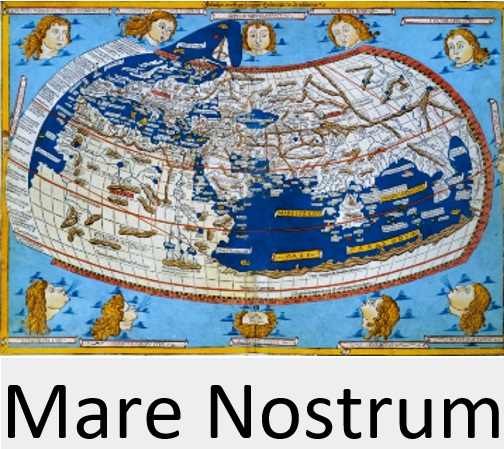Folklore in the Handwritten Albums of Yerevan Schoolgirls as a Manifestation of Urban Youth Subculture
DOI: https://doi.org/10.34680/urbis-2023-3(1)-149-161
Nvard Vardanyan
Institute of Archeology and Ethnography NAS RA
Yerevan State University, Armenia
[email protected]
ORCID: 0000-0002-3888-3668
ABSTRACT
In the last decades of the last century, the culture of keeping handwritten scrapbooks was widespread among urban schoolgirls. These scrapbooks are considered one of the small forms of urban and rural folklore of the recent Soviet past and have become an object of study by folklorists and anthropologists. This type of handwritten folklore has been widely studied in the works of foreigners, especially Russian theorists. It is usually referred to as post-folklore or subculture (Neklyudov). Various manifestations of adolescent behavior can be found in these manuscript albums: from rebelliousness to touching lyricism, from magical in-nature guessing games to sociological questionnaires. The predominant texts in these handwritten albums are lyrical texts consisting of couplets, quatrains, and rarely six verses, close to ditties. These small rhyming texts were recorded, memorized, and supplemented by friends and classmates. The tradition of girls’ albums survives today but is perceived as a relic of the Soviet era. These days, young people prefer to use social networks to express themselves. What is the Odnoklassniki portal but an electronic handwritten album? If modern folklore is actively and purposefully studied abroad, in the Armenian reality there are practically no serious studies on the topic so far. The main material of this study is schoolgirls’ notebooks created in Yerevan in the 80–90s of the 20th century, as well as materials recorded by the author from the former albums’ owners. Schoolgirls of this generation are now mature women, some of whom still lovingly keep their school handwritten albums. The article deals with the peculiarities of the folklore of girls’ school albums in Yerevan, the period and medium of their existence, and their genre-thematic manifestations, structure, and contents. The author pays most attention to the poetics of girls’ scrapbooks folklore, which is peculiar to urban schoolchildren. Such issues as bilingualism, thematic layers of these lyrical texts, expression of love feelings in them, attitude to friendship, school, studies, advice about love and life, relations with the older generation, and others are studied. Folklore formulas, allegorical expressions, and fortune-telling games characteristic of school-age psychology are also examined.
Keywords: schoolgirl, notebook, city subculture, postfolklore, memoirs, notes in verse ditties, games, questionnaires.
References
Arkhipova, N. G. (2006). Handwritten maiden notebooks: Genre-thematic uniqueness. Slovo. Folklore and Dialectical Almanac, 4, 26–32. (In Russian).
Bernshtam, T. A. (1988). A youth in the ritual life of the Russian community in the 19th –early 20th centuries: Gender and age aspect of traditional culture. Leningrad branch of Nauka. (In Russian).
Borisov, S. (1997). Evolution of girls’ album genres in the 1920s–1990s. Shadrinskiy Almanac, 1, 87–110. (In Russian).
Chekanova, A. V. (2004). Modern girls’ аlbum (problems of existence). Traditional Culture. Scientific Almanac, 1, 79–85. (In Russian).
Golovin, V. V., & Lurie, V. F. (1998). 20th century girl album. Foreword and Publication. In A. F. Belousov (Ed.), Russian School Folklore. From the “Sayings” of the Queen of Spades to Family Stories. (pp. 269–362). AST, Ladomir. (In Russian).
Harutyunyan, S. (1975). The genre of curses and wishes in Armenian folklore. Publishing House of the Academy of Sciences of the Armenian SSR. (In Armenian).
Kalashnikova, M. V. (2003). Modern аlbum тradition. In S. Yu. Neklyudov (Ed.), Modern Urban Folklore. (pp. 599–619). Publishing House of the Russian State University for the Humanities. (In Russian).
Khanyutin, A. (1989). School handwritten songbook: A new success of an old genre. In A. Khanyutin (Ed.), Mass Success. (pp. 193–209). All-Union Scientific Research Institute of Art Studies (In Russian).
Neklyudov, S. Y. (1995) After folklore. Zhivaya Starina, 1, 2–4. (In Russian).
Rozhkov, A. Yu. (2017). Schoolchildren’s notebook culture in 1920–1930s: Traditions and innovations. Historical and Social-Educational Idea, 9(6), part 2, 121–125. (In Russian).
Information about the author
Nvard Kh. Vardanyan
Cand. Sci. (Philology)
Research Fellow
Institute of Archaeology and Ethnography of the National Academy of Sciences of the Republic of Armenia
15, Charents St., Yerevan, 0025, Armenia
Associate Professor of Academician Hrant Tamrazyan Department of History of Armenian Literature and Literature Theory
Yerevan State University
1, Alex Manoogian St., Yerevan, 0010, Armenia
ORCID: 0000-0002-3888-3668
e-mail: [email protected]
For citation:
Vardanyan, N. Kh. (2023). Folklore in the handwritten albums of Yerevan schoolgirls as a manifestation of urban youth subculture. Urbis et Orbis. Microhistory and Semiotics of the City, 3(1), 149–161. https://doi.org/10.34680/urbis-2023-3(1)-149-161








